chronicles
|
Charlie was the two-year-old wether that we hand-reared after he was abandoned by his mum.
He was one of a pair of twins and his mum only looked after the other one. I found him in the paddock, not even cleaned off by the mother, and I thought he was dead. Then he moved. I took him inside, rubbed him down and put him in a towel by the fire. Soon after that, he took his first steps in our lounge room. He grew quickly and was soon back outside with Hoover (the other orphan that year). He never lost his familiarity with us and, unfortunately, that was what led to his demise. Recently, when either of us was feeding the sheep he would become more and more pushy. He would circle our legs, just as he did as a lamb, to get fed. In the last couple of weeks that escalated into butting at us, whether we had food or not. He was becoming dangerous and could have caused serious injury to Niki or me. He had a head like concrete and could not be dissuaded. Today, I took him into our sheep yards, gave him some sheep nuts to distract him and ended his life. It was quick and he had no idea what was coming. We won't waste his life and he'll be in the freezer by the weekend. Another lesson we have learned: don't hand-rear male sheep. Or, if you do, don't let them grow past one year. Posted by Farmer Wan
0 Comments
Back in August of last year I wrote about my first experience of butchering the back half of a pig, which had been kindly given to us by a friend in the village. This year things got a lot more serious on the farm and it was time for us to complete the full cycle of life from birth to death for some of our animals. I had known that this day would come eventually, but it is a hard one to prepare for having no previous experience. Back in March it became very apparent that we had too many sheep (27 in total). This was after a successful lambing season, on top of the fact that we didn't sell or slaughter any of the previous year's lambs. They were eating us out of house and home (or at least all of our grass down to its roots). Something had to be done. The idea had always been to start eating our own meat. We thought it would be our steer (Stew) who would be first in the freezer, but he has a reprieve for another year. Not knowing the first thing about slaughtering, dressing or butchering livestock I called upon a local farmer (Farmer G) to ask some advice. He offered to come round and assist, an offer I took up straight away. I had completed our sheep yards earlier in the year so Niki and I were able to muster the sheep and separate out one of last year's wethers and return the rest of them to the paddock. I am not embarrassed to say that I thanked the animal for its life. We had been responsible for it from birth through to death. Warning: Graphic description of slaughter follows Farmer G and his wife came round on a Friday afternoon and I was all set to go. I had my .22 ready, sharp knives on the bench and plenty of nerves. Farmer G told me what to do and I got on with it. A clean shot to the back of the head at point blank range was enough to down the wether. Next was bleeding it out as soon as possible. This involved cutting the throat, ensuring the jugular was severed. During this there was quite a lot of reflexive movement and it was necessary to hold tight (by the way, there was absolutely no doubt the sheep was already dead). We then moved the carcass to the shed and began the dressing (skinning and gutting) process. Once we were at this stage, it was much easier to see the animal as future meat, not the same as the sheep that had been walking around only 10 minutes ago. We started cutting the skin at the knees (careful not to cut the tendons which are needed whole for hanging) and worked away (front and back legs). Hoisting the carcass to hang in the shed was an effort even with two of us and I promised myself I would purchase a pulley for next time. Once the carcass was hung it became much easier to separate the skin using a closed fist to punch down between the skin and the brisket. Apparently in abattoirs there used to be the job title of 'left handed brisket puncher' just for this task. Once the skin was removed all the way to the neck, the head was cut off and the head and skin/fleece were removed. I would, in future like to use as much of the animal as possible, but this time I didn't plan to save the skin. Next was removal of the offal, a task to be carried out carefully to avoid any contamination. All of the stomach, intestines, etc. went into a blue plastic bin for later disposal (great for worms). Then there were the heart, lungs and liver. I kept the very healthy looking liver. Niki and I had liver and onions for lunch the next day, it doesn't get any fresher than that. Once the dressing was complete the carcass was wrapped to keep the flies away and left to hang for a few days (being late summer a couple of days was enough, in winter it could easily hang for a week or more). Meanwhile Farmer G's wife was in the kitchen with an emotional Niki. I was exhausted! Of course, dressing the carcass is only half the job. Unless you are doing a spit roast it's a bit hard to fit a whole sheep into your oven! Luckily one of our near neighbours is a retired butcher and he had already offered to give me a hand turning my sheep into useful cuts of meat. A few days after hanging the carcass he came over to show me what to do. We spent a Sunday afternoon in the shed with a trestle table covered in plastic, a large piece of untreated eucalypt as a chopping board and lots of sharp knives, an axe and a machete. We turned the carcass into 26kg of recognisable cuts of meat - chops, roasts and shanks. I think I'll need a few more goes at it to get better and know what I'm doing, but I now have a grasp of the basics. I bagged up all the meat, weighed it and, except for a shoulder put it all in the freezer. Niki slow-roasted the shoulder the following week and it was truly delicious. What an amazing experience to have a plate of food in front of you where everything on the plate (4 vegetables and meat) came from our farm - that's why we're here. Since then I have slaughtered, dressed and butchered a lamb and taken 9 other lambs to the sale yards and sold them for a good price, we sold 2 others to neighbours. We are now back down to 10 ewes, almost manageable for the little grass we have left. Postscript: After packing and weighing the meat I calculated how much it would have cost to buy the same cuts at the supermarket using a well known supermarket website. The 26kg of meat would have cost me $467 at the supermarket. I could have probably sold the live animal for about $70-80. That tells you something straight away - somebody is getting well paid for meat - and it's not the farmer! Posted by Farmer Wan
Wow . . . two months since the last update. Just confirms what I already knew: we have been busy! Muntanui is exploding with life at the moment -- baby animals, rampant weeds and the beginnings of what looks like a bumper season of produce. Our trees have been laden with more blossom than we'd ever seen before, we desperately need to cut hay before everything bolts to seed and my vege garden's assuming triffid-like proportions. The mild winter and very wet spring seem to have triggered a massive mast (flowering en masse) in the surrounding beech forest. Our hills are tinged with gold and red -- a palette you'd normally associate more with a New England autumn than an alpine Kiwi spring. It's an incredible time of year. 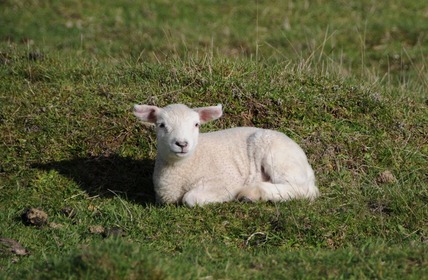 Happy, healthy, contented wee lamb. We're stoked. Happy, healthy, contented wee lamb. We're stoked. Bleat If there's one thing we managed to nail properly this year, it was lambing. Waiting until May to let Spidey in with the girls was the best thing we could've done. We had a higher pregnancy rate, more lambs born and the mortality rate was halved. The weather, although very wet, was a great deal warmer than it was last year and we used a paddock with plenty of shelter as the nursery. We had a no-interference-unless-absolutely-necessary policy this year. It paid off -- no ewes rejected their young'uns, And, to top it all off, Farmer Wan became a dad, delivering two lambs all by his big, soft-hearted self. If you'd like more of a blow-by-blow account of this year's lambing, including numbers and stats, check out our 2013 Lambing Diary. 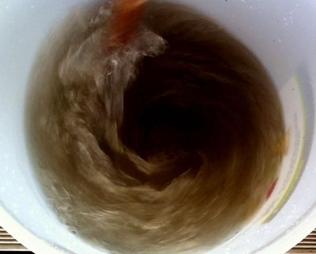 Spray We remain committed to converting Muntanui to biodynamics, so on Sunday 17 November we stirred and sprayed our second lot of Preparation 500. We distributed it over a paddock we're re-vegetating (more on that in the next post), with some left over for the orchard. This time, we managed to get through the entire process without arguing, so we're counting that as a win. It's way too early yet to know how successful our biodynamic practices are, especially when the conditions generally have been so ideal for rampant growth. The grass in the orchard is the lushest it's ever been and while it's true that we sprayed Prep 500 over it in autumn, it also got the benefit of drift from all the soil amendments we spread back in June. So it remains to be seen but we're very happy to persevere with the process for the foreseeable future. 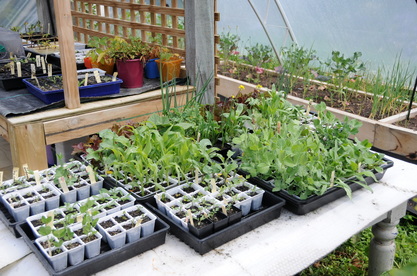 Seedlings ready to be planted out Seedlings ready to be planted out Gloves The vege garden is totally full of plants for the first time since we arrived here and I'm feeling smug about that. Planting it all out was set back by a month because October rained solidly and I couldn't work the saturated soil without risking damage to it. We won't have our own tomatoes for Christmas, but we should have them by late January, which is better than this year, when we didn't get them until May. The warmer weather means we've had our first wave of visitors and they've willingly donned gloves to help us out, for which we're very grateful. Big thanks to Kim and Jan, who cheerfully assisted with everything from tailing and rubber-ringing the ram lambs to weeding my woefully overgrown knot garden. Thanks also to Big Lil, weeder extraordinaire and best mate of St Anthony, the patron saint of lost things. I'm still not sure how much he had to do with Farmer Wan's sunglasses turning up again but hey, we're very grateful nonetheless. Last, but not least, this: Posted by Farmer Nik
Muntanui and some of its residents have been experiencing a noticeable growth spurt over the last three months. Take young Flora McFauna, for instance: nine months old and looking like a proper wee heifer. Although they're not very apparent from the image above, her horns have started growing, too: Yours Truly also seems to be experiencing a growth spurt, if all those suddenly teeny-tiny clothes hanging uselessly in the wardrobe are anything to go by. This isn't anything to celebrate and will be dealt with over the next three months, once the weather warms up a little and I don't need quite so much chocolate.
There'll be more on the subject of growth spurts soon. Right now, though, it's snowing and the whole house is shaking with the force of the gales we're getting. I've lit the fire. Farmer Wan has moved the cattle. Time to hunker down with a good book -- that's what lazy, cosy, winter Sundays are for, right? Posted by Farmer Nik If you're visiting Muntanui for the first time because of the feature in last weekend's Nelson Mail (or this weekend's edition of The Christchurch Press), hello and welcome! We hope you'll stop by often. If you're a regular, hello and welcome to you too. Farmer Wan and I, thanks to the afore-mentioned feature, are currently enjoying 15 seconds of fame. Feel free to follow the link, read the story, be mightily inspired and then send us money or something. We've been beavering away on two major projects over the last few weeks:
Because both involve raised beds and there was no way we could fill them with the compost we're making ourselves, we forked out for 12 cubic metres of the yummy, black stuff. So far, I've loaded about a quarter of it into wheelbarrows and trundled it around the place. This is a very satisfying process, physically speaking. Sandflies now require oxygen when scaling my biceps. Each project will get its own post, with lots of pics, in the near future. In the meantime, here's a sampling of images to show why we love Muntanui in the springtime. Coming soon: Compost: the agony and the ecstasy. No, just make that the agony.
Posted by Farmer Nik Meet Flora McFauna, born late afternoon on Thursday 11 October, about five minutes before we wandered up the hill to find out why her mum didn't seem interested in the hay we'd brought. The mother, Senga, had already been mated before she arrived at Muntanui in February but we weren't entirely sure she was pregnant. Although she was bulging a bit at the sides, it didn't seem to be by enough (not that we'd know, rank amateurs in animal husbandry that we are). As it turned out, dear Senga was indeed in calf. At the appointed time, she took care of business very quietly and efficiently by herself and then lay down to have a little 'her' time. When we went to check on her and spied the brown bundle lying on the ground in front, we initially thought the calf was dead. Farmer Wan started swearing quietly. After a minute or so, the calf moved, waved a leg in the air, rolled over and stood up. Joy! There was a fair bit of gunk still hanging out of Senga. Thinking she might have partially prolapsed, I took some very graphic photos that I won't disturb you by sharing, and emailed them to the vet. He identified the mess as "membranes" and said there was nothing to worry about unless she got sick. Mother and calf are both doing very well, especially considering the gales, rain and snow they had to put up with over the weekend. By rights, that should be the end of the nail-biting where baby animals are concerned, although our heifer calf, Sonsie, is now looking suspiciously bulgy in her own right. I'm hoping that's more to do with the good hay she's been eating than the amorous activities of Hamish the bull but I guess time will tell. On the subject of Hamish, yesterday was his third birthday. Given that he's recently taken to spitting out the carrots we bring him, he didn't get anything special to mark the occasion. Farmer Wan and I, however, treated ourselves to a bottle of champagne. This had nothing at all to do with Hamish's birthday; yesterday also happened to be our eighth wedding anniversary. If anyone had told us on that Friday afternoon at Brisbane's Customs House in 2004 that we'd end up back in New Zealand, learning to farm and trying to live sustainably, we'd have laughed them out of the room. I guess the joke's on us... and what a brilliant joke it's turning out to be! Posted by Farmer Nik I'm indulging myself and having fun while we play The Wellbeing Game (anyone wanting to join Team Muntanui, follow the link and sign up -- it's very cool!). Enjoy! Posted by Farmer Nik
Lambing. OMG. Basically, our first experience of lambing was pretty horrendous. We’d sort of prepared: we had supplies of colostrum and milk powder, two feeding bottles with lamb teats, an elastrator with rubber rings and a woolly lamb jacket. As it turned out, those things were vital and we used them all, so yay us. But in other respects – especially where shelter was concerned-- our preparation was woefully inadequate. It didn’t help that the weather was absolutely the worst we’ve experienced here to date: gales, snow and freezing, lashing rain for the better part of ten days. In a nutshell, ten lambs were born and we lost four, plus a ewe. Two of the lambs were lost because of our inexperience (we didn't get enough colostrum into them after their mum rejected them) and two because of the weather. We lost the ewe because we didn’t have the medication she needed. Oh, the lessons we’ve learned. We had lambs in our laundry for almost three weeks. Two died, two survived. When we started running out of newspapers and floor-mopping energy, Farmer Wan constructed the LAMBorghini (see pic below) to contain them. It saved a lot of work but it also meant we could no longer hear little hooves clattering around the place, which was kind of a shame. On the plus side of the affair, the two weeks of lambing coincided exactly with Farmer Wan’s R&R break home. I really don’t think I could’ve managed on my own. We also had a lot of support from our neighbours and friends: spare newspapers and drop-sheets for the laundry floor, extra hot water bottles, two beautifully-built sheep shelters, alternative teats for the bottles, help with feeding the laundry lambs and even some muffins to feed us! So... with the laundry lambs now roughing it in the great outdoors, we have six little ovines bouncing around the place. Every afternoon between three and four o’clock they go mental, chasing each other around and finding the highest piece of ground as a look-out. I’ve taken some film footage and I’ll try to post it here sometime soon. In the meantime, enjoy the photos. And for the sake of posterity, the full, day-by-day account of our lambing travails can be found here. Posted by Farmer Nik On the day I discovered the limping ewe, my heart plunged into my boots. Being a diligent heart, it continued to do its job but you could tell that its own heart wasn't really in it. The poor thing had been slowly getting heavier over the previous weeks, weighed down by an assortment of stresses, including an injured back and Farmer Wan's absence. The ewe didn't look too happy either. I waited a couple of days to see if she'd come right by herself. Nope. She got worse. I, in turn, got more stressed and bleated long and loudly over the phone to Farmer Wan in Oz. He rang one of the local farmers back here, who then rang me. (If this sounds convoluted, that's because it is. I suck at asking for help, especially from people I don't know.) "Sheep are the biggest wimps of all farm animals," the farmer told me. "They're the first to let you know when something's wrong with them. Cows are really robust, deer will just drop dead on you without warning, but sheep act as if they're going to cark it for the least little thing." This was reassuring but it didn't help with my herculean problem, which was how to catch Hopalong and get her into the paddock where the livestock yard is, ready for the vet. Our paddocks are all 1.6 hectares (nearly 4 acres), and the one relevant to this story has manuka scrub on the northern boundary. The sheep are half wild and I, if you recall, have a bad back. My knight in High Vis and polar fleece appeared in the form of our neighbour, Andreas. He's a strapping young German bloke who gets a kick out of chasing livestock around paddocks and rugby-tackling them to the ground. I saw him in action back in February, when we needed to separate Spiderbuilder the Ram from the rest of the flock. Andreas ran him down, hoisted him up and heaved him over the fence. It was beautiful, I tell you. So, thanks to Andreas, we got the ewe into a trailer on the back of his 4WD, drove to the other paddock and installed her in the yard. After my sheep wrangler left, I realised I needed to fill the yard's water trough. There was a 25-litre container full of water in the shed. I could put it in the 4WD and drive it up to the yard. Great idea!
I crunched my back so badly lifting the damn thing that for the next five days, I had to get dressed sitting down. I couldn't bend over at all. By now, I was in so much pain and so strung out generally, that I was half-expecting the vet to have a go at me for not knowing how to care for our sheep's feet. He didn't, of course. He was terrific. "A bit of advice for the novice farmer," he said. "If you have to yard a sick sheep, always put another one or two in with it. If you leave it alone, it thinks it's the last sheep left in the world and it panics. If you have two or three in together, they keep each other calm and they're easier to work with." Duh. It was obvious as soon as he said it but I doubt I'd have come to that myself. He checked Hopalong's teeth, confirmed that she was approaching four years old and then had a look at her foot. He showed me how to compare the feet, then the toes, to isolate where the problem is. One of Hopalong's toes was swollen but there was no obvious cause. The diagnosis was "bad bruising" and he gave her two injections: an antibiotic and an anti-inflammatory. He demonstrated how to clip the hooves. He talked about foot-baths. And then we discussed the need to section off one of the paddocks for lambing. Farmer Wan came home the following week and, with Andreas and his family helping, built a mighty fine set of sheep yards. Hopalong slowly healed, over about ten days. My heart climbed laboriously back into my chest and my back improved. "But what about the herpes?" you ask. "That was in the title. What's that got to do with any of this?" To which I reply: "An episode of shingles, dear friend. The wages of my stress. Very painful and un-fun. I don't recommend it." So I've decided I need to change the way I view things. We came here to escape a certain type of stress, not to incubate horrible mutations of it while living in a charming alpine setting. I'm in a place that I love, with a life that I've chosen and new experiences that I've invited. It's time to relax a little, rest a little and look forward to the arrival of new life at Muntanui. Lambing's due to commence in the first week of September. Stay tuned! Posted by Farmer Nik 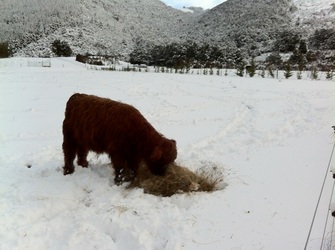 I'm sure I left them SOMEWHERE around here ... I'm sure I left them SOMEWHERE around here ... According to the Concise Oxford Dictionary, to wince is to: "Show bodily or mental pain or distress by slight start or loss of composure; flinch." Here's the Muntanui version: 1. "Farmer Wan's involuntary movement upon realising that the hairy object the dog is holding in his jaws is not a mouse, nor a rat, nor even a squashed baby stoat, but rather our young steer's testicles, detached from their former owner and still sporting their blue elastrator band." 2. "The collective reaction of all males who read this post." Posted by Farmer Nik |
About Ewan and NikiFarmer WanScottish mechanical engineer with a deep and abiding passion for good food. Outstanding cook. Builder of lots of stuff. Cattle whisperer. Connoisseur of beer. A lover rather than a fighter. Farmer NikKiwi writer and broadcaster who hates cabbage, even though she knows it's good for her. Chook wrangler. Grower of food and flowers. Maker of fine preserves. Lover of dancing and wine. Definitely a fighter. Archives
November 2016
Categories
All
|
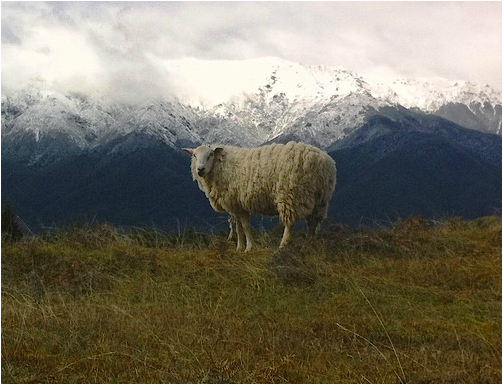
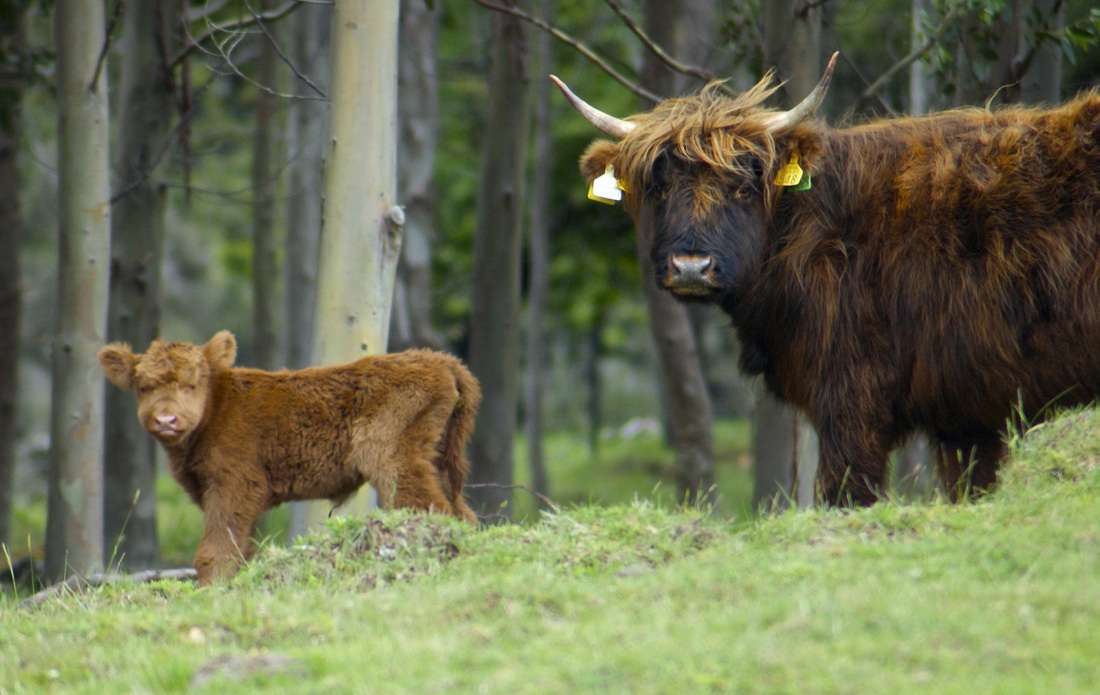
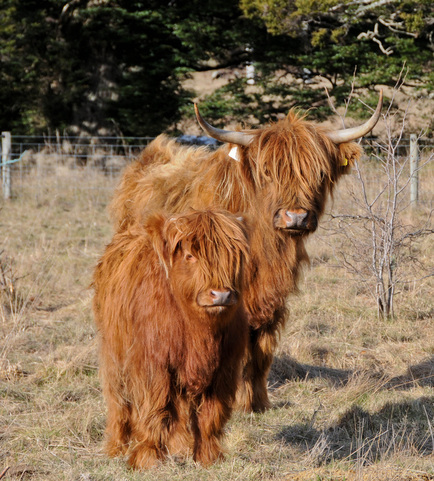
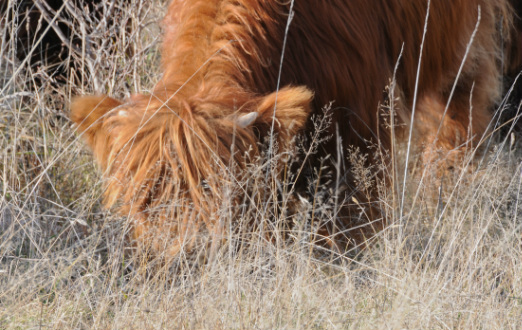
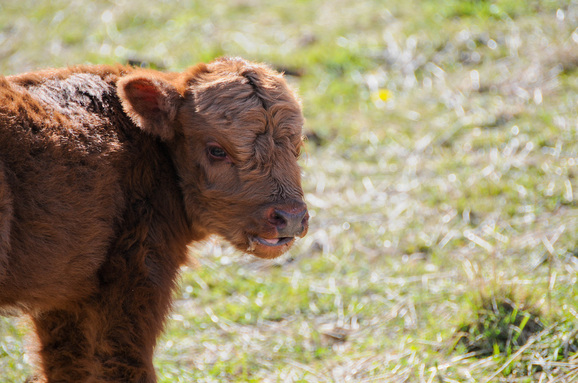
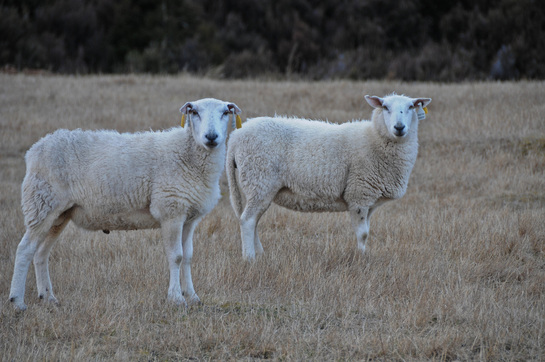


 RSS Feed
RSS Feed
